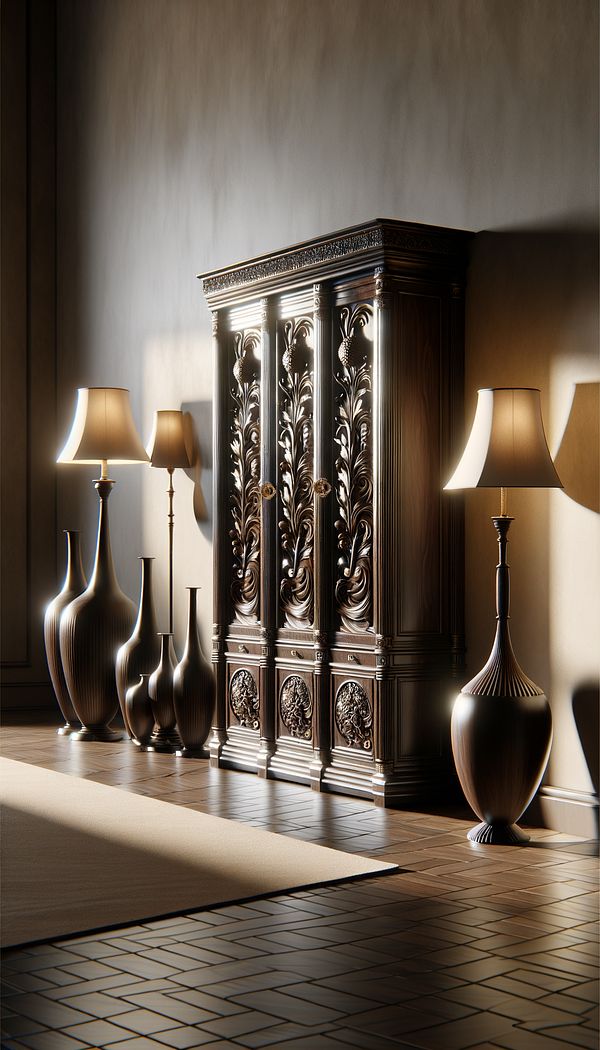What is a Huntboard?
A huntboard is a type of tall, slender sideboard originally used for serving food in the dining areas of hunting lodges.
Description
A huntboard is a fascinating piece of furniture rooted in practicality and history. Originating in the southern United States during the 18th century, this type of sideboard was typically found in the dining areas of large, country homes or hunting lodges. Unlike traditional sideboards, which are low and wide, huntboards are characterized by their tall, slender build. This design allowed servants in these lodges to serve food more efficiently to guests seated at long dining tables, often after a day of hunting.
Over time, the huntboard's use has evolved beyond its original functional role. Today, it serves not only as an attractive piece of furniture for displaying and serving food but also as a versatile storage solution. Its narrow design makes it an excellent choice for smaller spaces where a traditional sideboard might be too bulky. The modern huntboard may feature drawers or cabinets for storage, alongside the flat top surface traditionally used for serving. Its aesthetic appeal lies in its clean lines and tall stance, which can complement various interior design styles, from rustic to contemporary.
The transformation of the huntboard from a functional piece of dining furniture to an adaptable home décor item showcases the evolution of furniture design in response to changing needs and tastes.
Usage
In contemporary interior design, a huntboard is often utilized in dining rooms, hallways, or living spaces as both a decorative and functional piece. It can be styled with lamps, vases, or books on top, or used to serve food during gatherings. The huntboard is also a popular choice for holding table linens, serving ware, or other dining essentials in its storage areas.
FAQs
-
Is a huntboard different from a buffet or sideboard?
Yes, while a huntboard, buffet, and sideboard serve similar functions of storage and serving in dining areas, they differ in structure. Huntboards are typically taller and narrower than buffets and sideboards, making them distinct in their appearance and utility.
-
Can a huntboard be used in rooms other than the dining room?
Absolutely. While traditionally used in dining settings, a huntboard's slim profile and versatile design make it suitable for use in hallways, living rooms, or even bedrooms as a stylish storage solution.
-
How do I choose the right huntboard for my space?
When choosing a huntboard, consider the available space, your storage needs, and your interior design style. Ensure the dimensions fit well within your intended space and that the style complements your existing décor. Prioritize functionality alongside aesthetic appeal for a balanced choice.
Practical Application
When incorporating a huntboard into your home decor, consider its placement carefully. It should not only fit physically in the chosen space but also serve a purpose, whether for display or storage. Styling the top with carefully chosen accessories can transform it into a focal point of a room. Additionally, ensure that it complements the interior design styles present in your home, adding to the cohesion and visual appeal of your living space.
-
Furniture Types599 articles
-
Decorating Principles & Elements330 articles
-
Storage & Organization79 articles
-
Hand DistressingHand distressing is a decorative technique used to give new furniture or materials an aged or weathered appearance.
-
Engineered HardwoodEngineered hardwood is a type of flooring made from multiple layers of wood, including a real hardwood top layer.
-
FiberboardFiberboard is a type of engineered wood product made by bonding together wood fibers under heat and pressure.
-
HassockA hassock is a thick, firm cushion used as a footstool or for kneeling.
-
BalanceBalance in interior design refers to the distribution of visual weight in a space.
